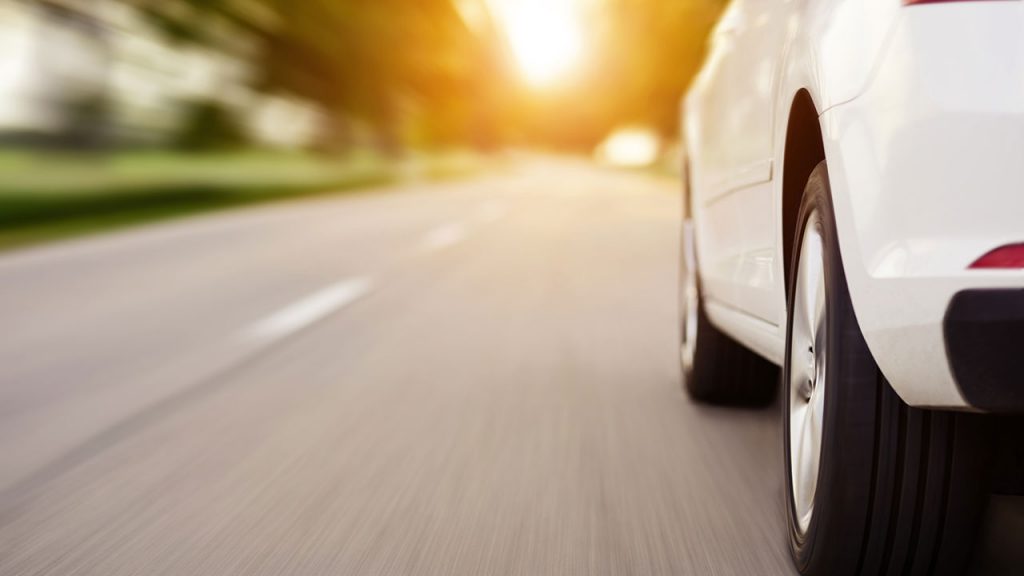
Caution: More driving accidents occur in the summer months!
Summer has finally arrived! Ah, those lazy, hazy, crazy days of summer. The season of warm weather, longer days, and plenty of sunshine.
Unfortunately, summer also means more driving hazards and accidents. The Memorial Day through Labor Day holidays are the 101 most dangerous days to be on the roads.
More driving accidents occur in the summer months because there are more people on the roads, and it is not just cars and trucks; there are more motorcycles, recreational vehicles, bikes, and pedestrians in the streets in the summer than in any other season. People are traveling for graduations, weddings, reunions, vacations, sporting events, and festivals. These events often involve alcohol, which results in more intoxicated drivers on the already busy roads.
With all the activities that summer brings, here are some common-sense tips on dealing with potential hazards so you can stay safe all summer long.
Watch Out for Kids (and animals):
Always look for children and pets in, around, and under cars. Never leave a child alone in a car. Heatstroke can occur very quickly if a child is left inside or gains access to a parked vehicle. Before backing out of a parking spot, walk around your car to check for children or pets. Even with a backup camera, every car has a blind spot.
Share the Road - Motorcycles and Bicycles:
Many cyclists have waited to ride through the cold winter months and are enthusiastically back on the roads during summer. Be extra aware of cyclists as they can be challenging to see and can disappear in a motorist’s blind spot. Cyclists are more vulnerable to severe injuries or death if involved in an accident. Increase your following distance when behind a motorcycle or bicycle and be extra careful when making turns. Look for cyclists when opening car doors, changing lanes, and backing out of a driveway. Treat bicycles like slow-moving vehicles and allow at least three feet of clearance when passing.
Walk this Way - Pedestrians:
The summer months also bring more pedestrians to the roads. Be aware that pedestrians are often distracted as they focus on their cellphone instead of where they are walking. Be especially mindful of pedestrians in crowded vacation spots and urban areas. Always stop for pedestrians in crosswalks, and never pass a vehicle that is stopped at a crosswalk.
School's out for Summer:
Teenagers and young drivers have more free time in the summer and, they spend a lot of that time on the road. Inexperience and lack of caution directly relate to the fact that teen driver-related accidents and fatalities are most profound during the summer.
Teenagers tend to speed, bring friends in the car with them, and be distracted by their mobile devices. If you are a parent of a young driver, model safe driving and talk to your kids about how to be a safe and responsible driver. If you see a teenager driving recklessly or with dangerous distractions, give them a wide berth.
Roll With It - Tire Safety:
Worn tires can cause you to lose traction and control of your vehicle, especially during those summer rainstorms. Regularly check to ensure your tires have good tread and are properly inflated. If you have less than 1/8 inch of tread, you likely need new tires.
Regularly check tire pressure when the tires are cold, meaning when the car has not been driven for three or more hours. The correct tire pressure should be listed in your owner’s manual or the driver’s side door frame. (Correct tire pressure is NOT what is listed on the tire itself.)
During summer, expanding the air inside the tire, and overinflated tires increase the chance of a blowout. If you have a tire blowout, your goal is to maintain control of your vehicle. Keep both hands on the steering wheel, gradually take your foot off the accelerator, and regain control of your vehicle. Look where you want your car to go and steer in that direction. Continue to slow down and pull off the road in a safe place.
Pesky Potholes:
Cold weather tends to create potholes in the roads. The force of hitting a pothole can damage tires, but it can also cause steering misalignment, suspension problems, and damage to your engine and exhaust system. It would be best if you avoided potholes, but that is not always possible. If you find yourself on a rough stretch of road, the best thing you can do to prevent or diminish pothole damage is drive slow. More minor potholes won’t damage your vehicle, and larger potholes will be easier to see and avoid if you drive slow.
If you cannot avoid a pothole, then face it head-on. It is best to go slow and straight through a pothole. Do not swerve, as you could lose control of your vehicle and cause a more severe accident than the one you are trying to avoid.
In the Zone:
During summer, construction crews also take advantage of the warm weather and longer daylight hours. Road repair (for those pesky potholes) and construction projects usually cause traffic delays and detours. Find an alternate route or allow extra travel time if you cannot avoid work zones. Always slow down, increase your following distance, and avoid distractions when traveling through work zones.
Weather or Not:
Sunny days and stormy days both create summer driving hazards. Hot temperatures can cause you and your vehicle to overheat. The bright sun can cause extreme glare and impair vision while driving. Always bring sunglasses and plenty of water with you when driving. Make sure your vehicle has proper engine coolant levels and good wiper blades. Rainstorms can pop up at any time, pouring a lot of water on the ground and causing slick roadways. When rain first starts to fall, the oils and residue on the road mix with the rainwater, turning it into a slick coating and resulting in slippery road conditions. So, take precautions and reduce your speed when the rain begins to fall.
Another summer road hazard is hydroplaning, which occurs when water causes your tires to lose contact with the road surface. If you have worn tire tread, you are more likely to lose traction and hydroplane. Proper tire pressure and driving at an appropriate speed for the wet conditions will reduce the risk of hydroplaning. If your car starts to hydroplane, you should remain calm, let off the throttle, and gently try to steer in the direction you want to travel until you regain traction. Hydroplaning feels as if your car is sliding on ice and usually lasts for just a few seconds or less, but it is scary.
Summer storms also bring flash flooding and hail. You have likely heard the phrase “turn around don’t drown,” which means never try to cross a road or bridge that is covered with water. Pull off the road during a hailstorm and stay in your car but move away from the windows. Checking weather reports and altering your travel plans can help you avoid severe weather driving.
Stay Alert:
Distracted and impaired driving is a significant factor in auto accidents. Pay attention and obey speed limits. Never text and drive, never drink and drive, never use drugs and drive, period. If you notice an impaired driver or a car driving erratically, keep your distance and call the authorities if necessary.
Hopefully, these are safety precautions you are already doing year-round. A quick refresher course helps remind us that the privilege of traveling on our roadways comes with responsibilities. While you enjoy all the season has to offer, please stay cautious and keep the safety of yourself and others in mind. Have a great summer!
The National Highway Traffic Safety Administration has more detailed summer driving tips here https://www.nhtsa.gov/summer-driving-tips, and the Insurance Institute for Highway Safety has extensive safety information on their website https://www.iihs.org/.

